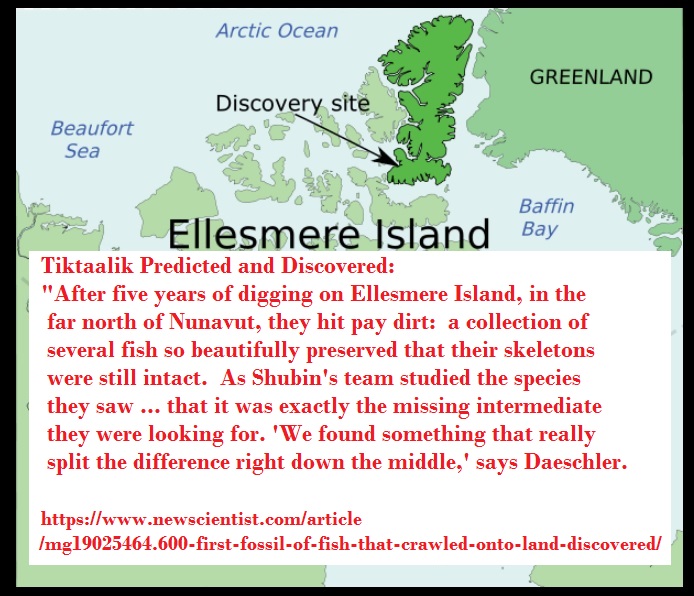If I were going into a florist shop to tell the professional florists that they don’t know anything about flowers, I would first make sure I knew A LOT of A LOT about flowers.
How is it that you believe you can present yourself in the midst of many knowledgeable people, including professional biologists and geneticists, and tell them that they don’t know how to do science?
In just this little section I quote from above, you lay down two charges:
- That Evolution does not allow predictions; and
- the theory of evolution will predict a continuum over time rather than
vested heirarchies clearly differentiated from each other…
In response to (1), you apparently think you can take any non-predicted part of the discipline of Evolution, and say that if it was real science, these unpredicted things SHOULD have been predicted. This is like Climate Warming Denialists saying climatologist models are useless because they can’t accurately predict average temperatures for the next 12 months. Below is a highly condensed description of a successful prediction of what genetic testing should reveal (in existing whales) regarding those with baleen instead of teeth:
^^^^^^^^^^^^^^^^^^^^^^^^^^^^^^^^^^^^^^^^^^^^^^^^^^^^^^^^^^^^^^^^^^^^^^^^^^^^^^^^^^^
"Some of the genes known to be used in all mammals for tooth formation were the obvious candidate genes to start with: the products of the ameloblastin, amelogenin, and enamelin genes are all used in the formation of tooth enamel, the hardest structure in the vertebrate skeleton. Researchers went looking for these genes in several Mysticete (i.e. toothless whale) species. The results showed that all the species studied did indeed have these three genes present as pseudogenes (and more specifically, as unitary pseudogenes, a special class of pseudogene we have discussed in detail previously).
Finding these genes as pseudogenes in toothless whales was exactly what evolution predicted, but there was a catch: none of the mutations that removed the functions of these three genes were shared between different species, suggesting that these genes lost their function independently in the species studied. This finding was at odds with data from the fossil record, which suggested that teeth were lost only once, and early in the lineage leading to all modern toothless whales. So, the researchers seemed to have two lines of evidence that at face value contradicted each other. The fossil record suggested that tooth loss occurred once in the common ancestor of all toothless whales, but these three genes seemed to have been inactivated independently, several times over, suggesting that loss of teeth should be happening later in Mysticete evolution, and more than once.
One proposed explanation for the apparent discrepancy (among several put forward) was to predict that a fourth gene required for enamel formation was lost early in Mysticete evolution. The loss of any one gene necessary for forming enamel would be enough to prevent the process altogether. In this case, the loss of this fourth gene would prevent tooth enamel from forming, even though the genetic sequences of the other three enamel genes would still be intact. Once enamel function was lost, random mutations in the remaining enamel genes could then accumulate later in Mysticete evolution after speciation in this group was already underway. To test this hypothesis, the research group went hunting for other enamel genes in toothless whales.
[END OF SECTION]
^^^^^^^^^^^^^^^^^^^^^^^^^^^^^^^^^^^^^^^^^^^^^^^^^^^^^^^^^^^^^^^^^^^^^^^^^^^^^^^^^^^
Is the confirmation of “toothless whale genetics” a rare success? No. What else has evolution successfully predicted? Here is a short list:
1] A biochemical way for information to be passed on from generation to generation that can be subject to mutation
2] Shared transposons between closely related species
3] The synteny between genes on chromosomes
4] Shared pseudogenes with shared means of inactivation
5] Incomplete lineage sorting when we encounter three closely related clades.
6] Mechanisms for new genes to be created
7] Feathered dinosaurs
8] The ability of closely related species to interbreed
9] Countless intermediate forms in the fossil record including this startling find of the Tiktaalik. One group estimated the geologic period and conditions where an intermediate “Fish-to-Tetrapod” should have existed on the Earth. The most accessible place for an intersection of these conditions was on Ellesmere Island, in the
far north of Canada. The team went there… the rest is history.
10] One of the successful predictions easiest to explain was the conclusion that one set of human chromosomes must be a fusion of two chromsomes, “… because we have one fewer pair than other great apes do. Long after that prediction the fusion site was found.”
@Ashwin_s, I’ll tackle your other egregious accusation … [re-stated below]
[ (2) the theory of evolution will predict a continuum over time rather
than vested heirarchies clearly differentiated from each other…]
^^… in a separate posting.
